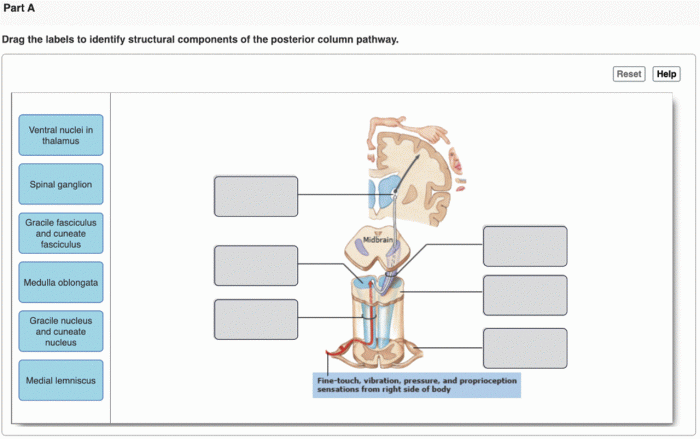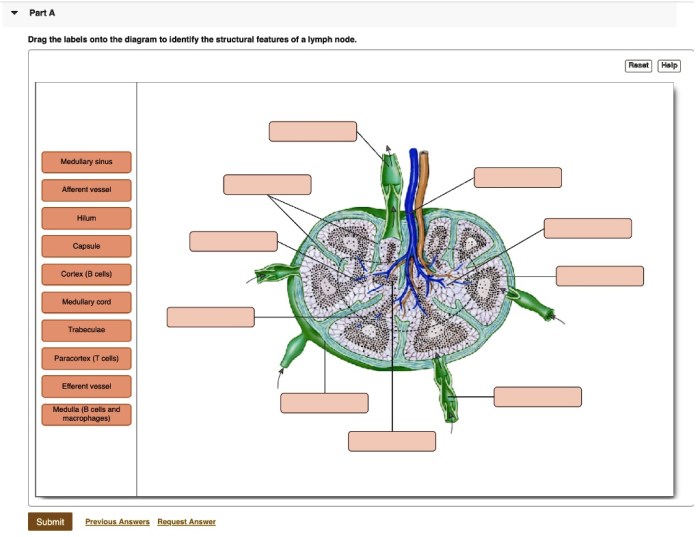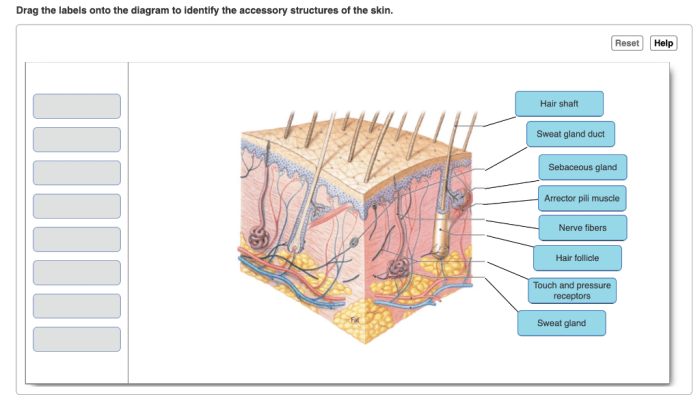Drag the labels to identify the structural components of brain. – Embark on a captivating journey into the intricate world of the brain as we explore its structural components in this comprehensive guide, “Drag the Labels to Identify the Structural Components of the Brain.” This interactive learning experience will illuminate the fundamental parts of the brain and their crucial roles in coordinating bodily functions, processing information, and controlling behavior.
Delving into the depths of neuroscience, we will dissect the cerebrum, cerebellum, and brainstem, unraveling their unique functions and how they orchestrate our thoughts, actions, and overall well-being. Prepare to be amazed as we unveil the intricate connections between these components, forming a symphony of neural activity that governs our existence.
Structural Components of the Brain: Drag The Labels To Identify The Structural Components Of Brain.

The brain, the control center of the nervous system, comprises several interconnected structural components that orchestrate a vast array of bodily functions. These components include the cerebrum, cerebellum, and brainstem, each with distinct roles in processing information, coordinating movement, and regulating vital functions.
Cerebrum, Drag the labels to identify the structural components of brain.
The cerebrum, the largest part of the brain, is responsible for higher-level cognitive functions such as perception, language, memory, and reasoning. It consists of two cerebral hemispheres, each further divided into four lobes: frontal, parietal, temporal, and occipital. The frontal lobe is involved in decision-making, planning, and motor control.
The parietal lobe processes sensory information, such as touch and temperature. The temporal lobe is associated with memory, language, and hearing. The occipital lobe is responsible for vision.
Cerebellum
Located at the back of the brain, the cerebellum is crucial for coordinating movement, balance, and motor skills. It receives sensory input from the body and the cerebrum and uses this information to fine-tune muscle movements and maintain equilibrium.
Brainstem
The brainstem, connecting the brain to the spinal cord, consists of the medulla oblongata, pons, and midbrain. The medulla oblongata regulates vital functions such as breathing, heart rate, and digestion. The pons relays sensory information between the cerebrum and cerebellum and plays a role in sleep and arousal.
The midbrain is involved in motor control, eye movements, and reward processing.
Interconnections and Communication
The structural components of the brain are interconnected through a vast network of neural pathways. Neurons, the basic units of the nervous system, communicate with each other through neurotransmitters, chemical messengers that transmit signals across synapses, the junctions between neurons.
This complex network allows for the integration of information, coordination of bodily functions, and the formation of memories.
Clarifying Questions
What is the largest part of the brain?
The cerebrum is the largest part of the brain, accounting for approximately 85% of its total volume.
What is the function of the cerebellum?
The cerebellum plays a crucial role in coordinating movement, balance, and posture.
What is the brainstem responsible for?
The brainstem is responsible for regulating vital functions such as breathing, heart rate, and sleep-wake cycles.


